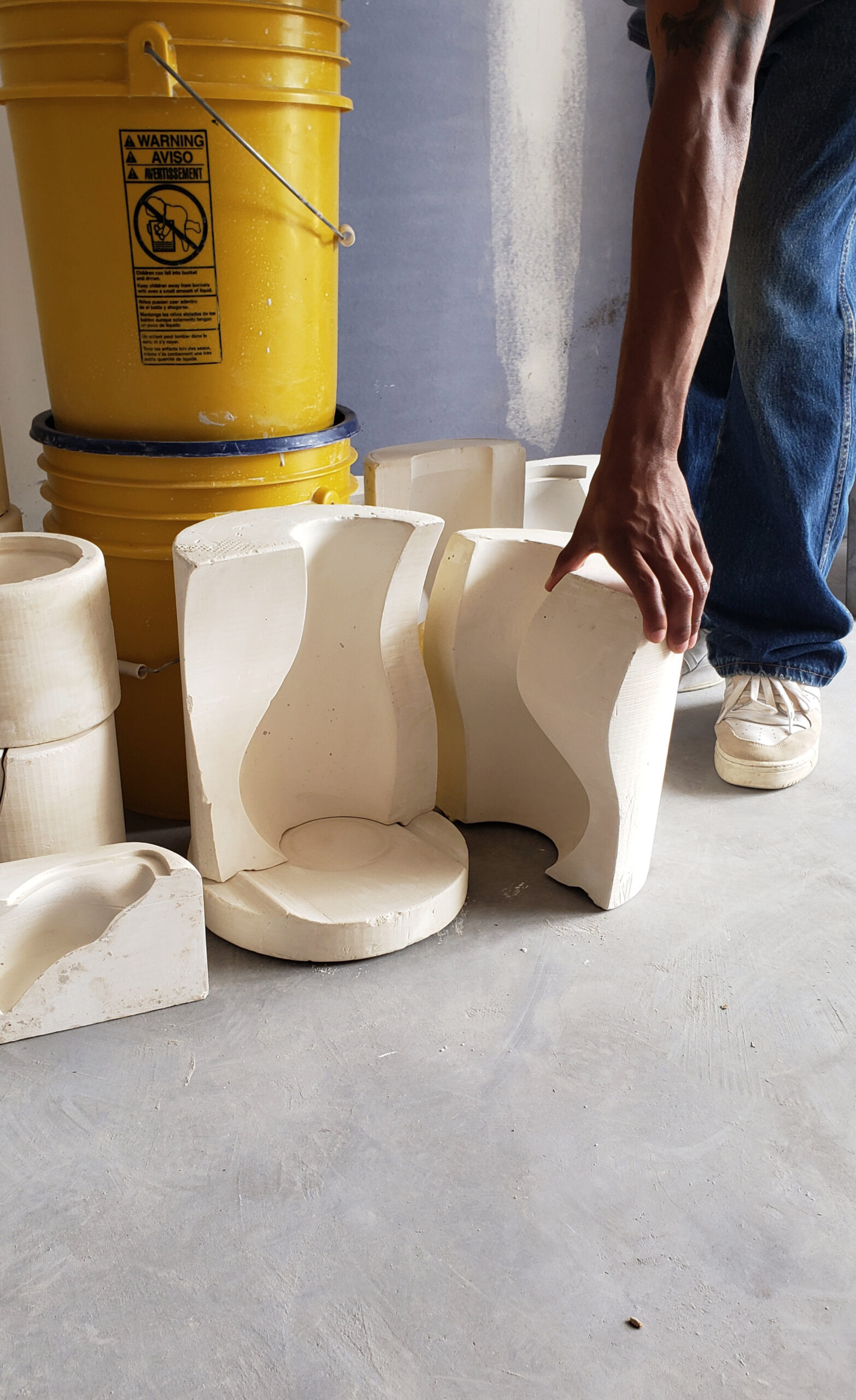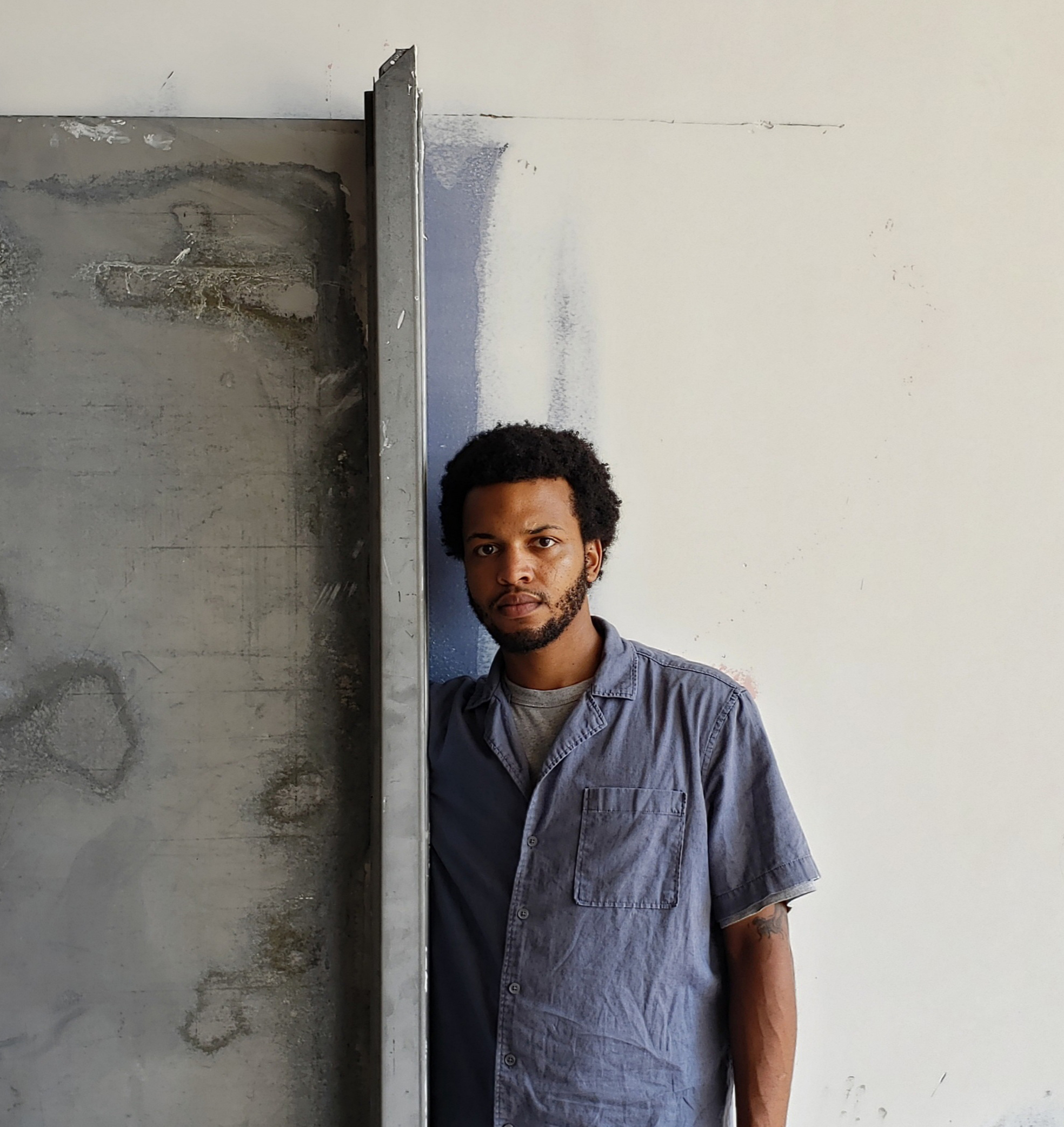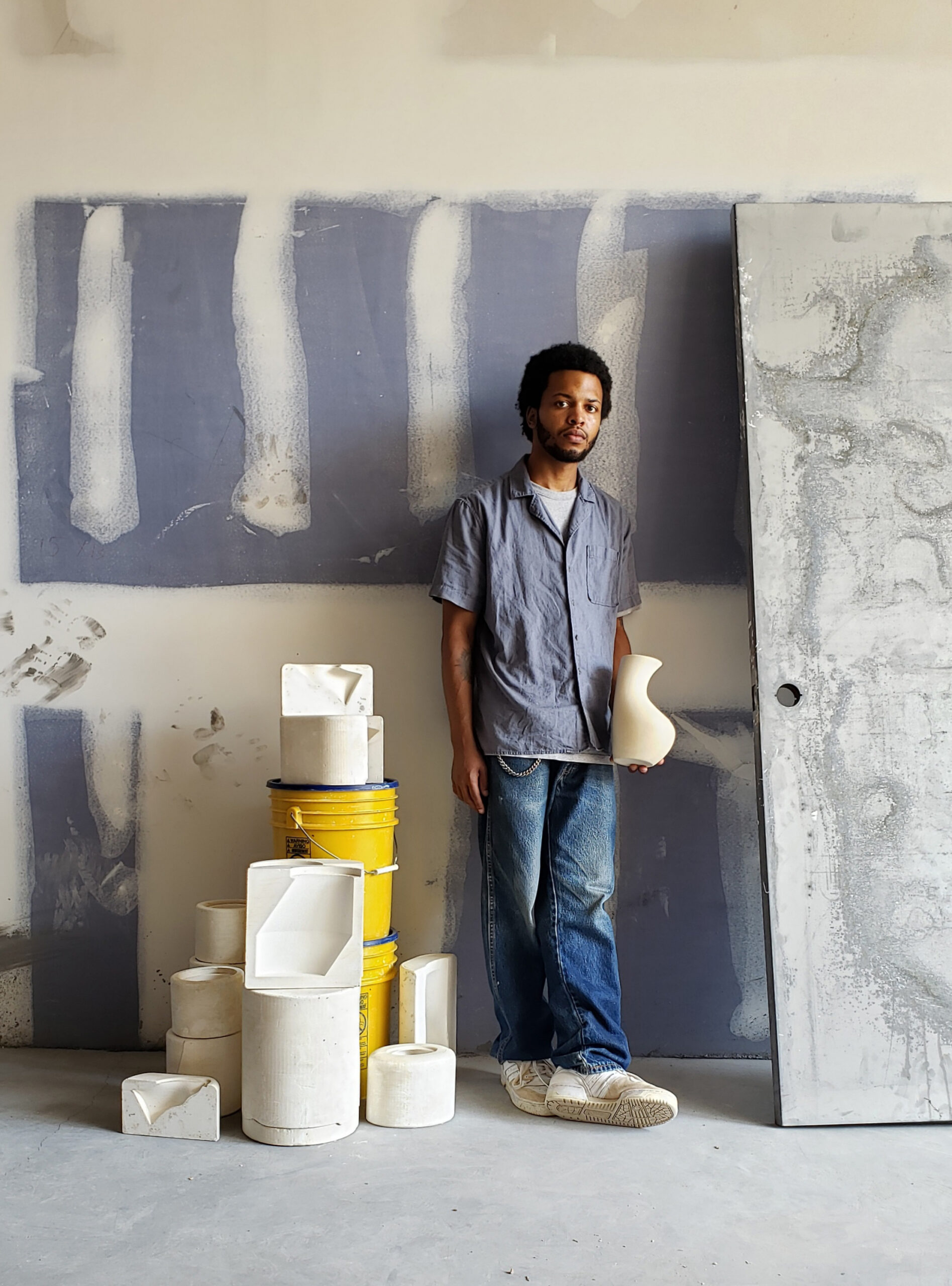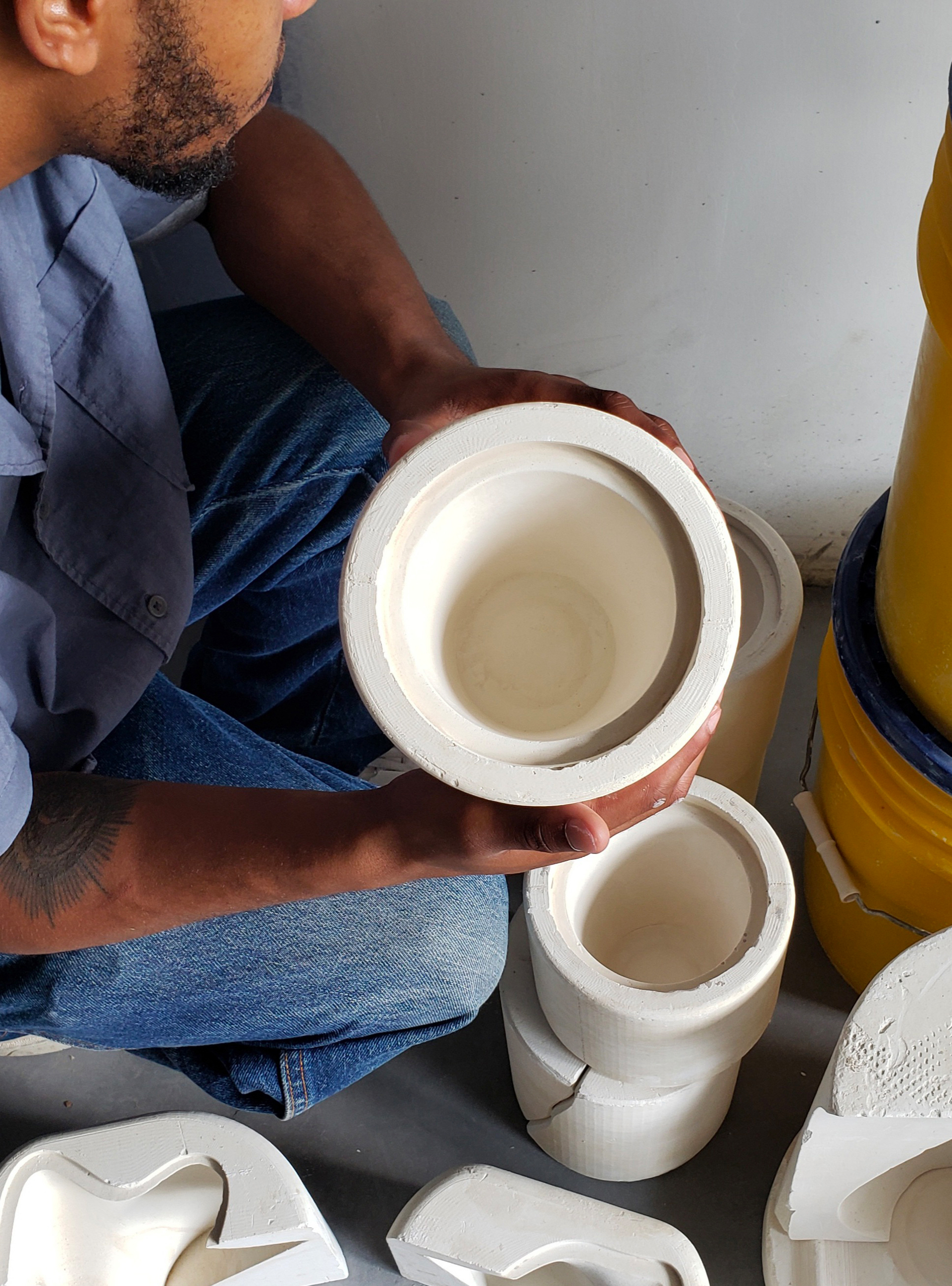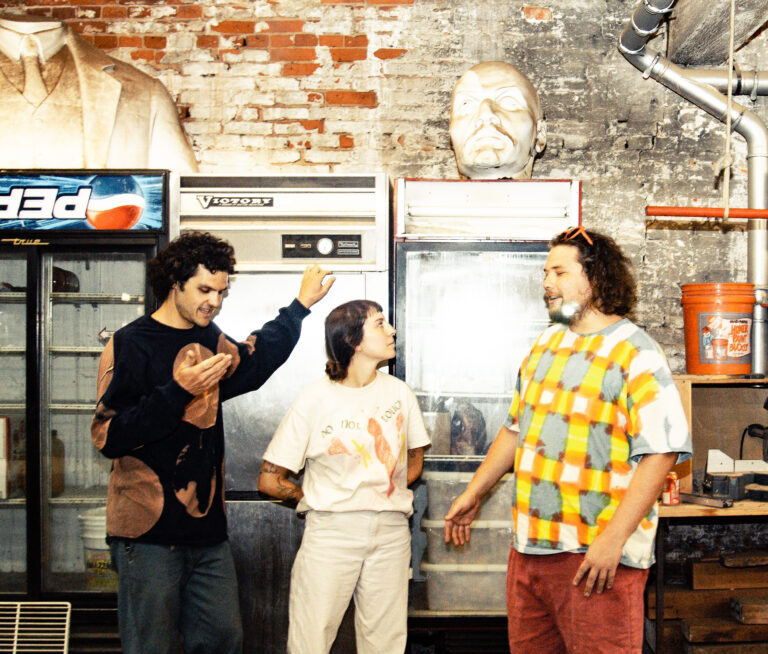JGS
How do you feel Homa fits into or diverges from the larger canon of ceramics?
AB
Ceramics is one of the oldest art practices, and people are really traditional about it, meaning they value pieces that are hand-crafted and visibly imperfect, but at Homa, we embrace a really clean aesthetic. I believe we blur the lines between hand-crafted and clean, because our pieces are still touched by the human hand – we do slip, casting and molding, remove seams, and wipe them down – but we also ensure a smooth, clean look and feel.
JGS
As more and more makers are integrating tech into their practice, how do you see the craft of ceramics evolving in the future?
AB
That’s a really big question! Creatively, I see people taking a more experimental approach withthe medium, like integrating new tools and materials. I’m currently using 3D technology, but what could ceramics be with 4D tech? In terms of business, I see traditional ceramics slowly falling away. The wheel requires so much time and energy, and produces one object at a time. It’s really difficult to make it profitable.
JGS
What more do we have to look forward to from Homa Studios?
AB
Homa finally has its first headquarters that we’ll be moving to in the fall! It’ll be like a showroom where we’ll invite buyers, interior designers, and shoppers. We’re also moving towards designing small furniture pieces, such as stools, side tables, lamps, and floor vases.
●
Well-known for their use of clay sourced directly from their local land at Toney’s Brook, Homa Studios is expanding into a multi-media studio that will experiment with wood, glass, and other mediums that also hold ties to the local community. As Homa moves from tabletop to building their own table and all of the objects around it, the elegance of our homes will soon elevate right along with them!
Jonai Gibson-Selix is a multi-hyphenate designer from Philly – so Philly that Questlove gave her a shoutout at her college graduation. From art direction to public art, she uses design as a tool to shape a just present and future for local communities and global Brands. And when she feels like nerding out, she writes about design, too.
